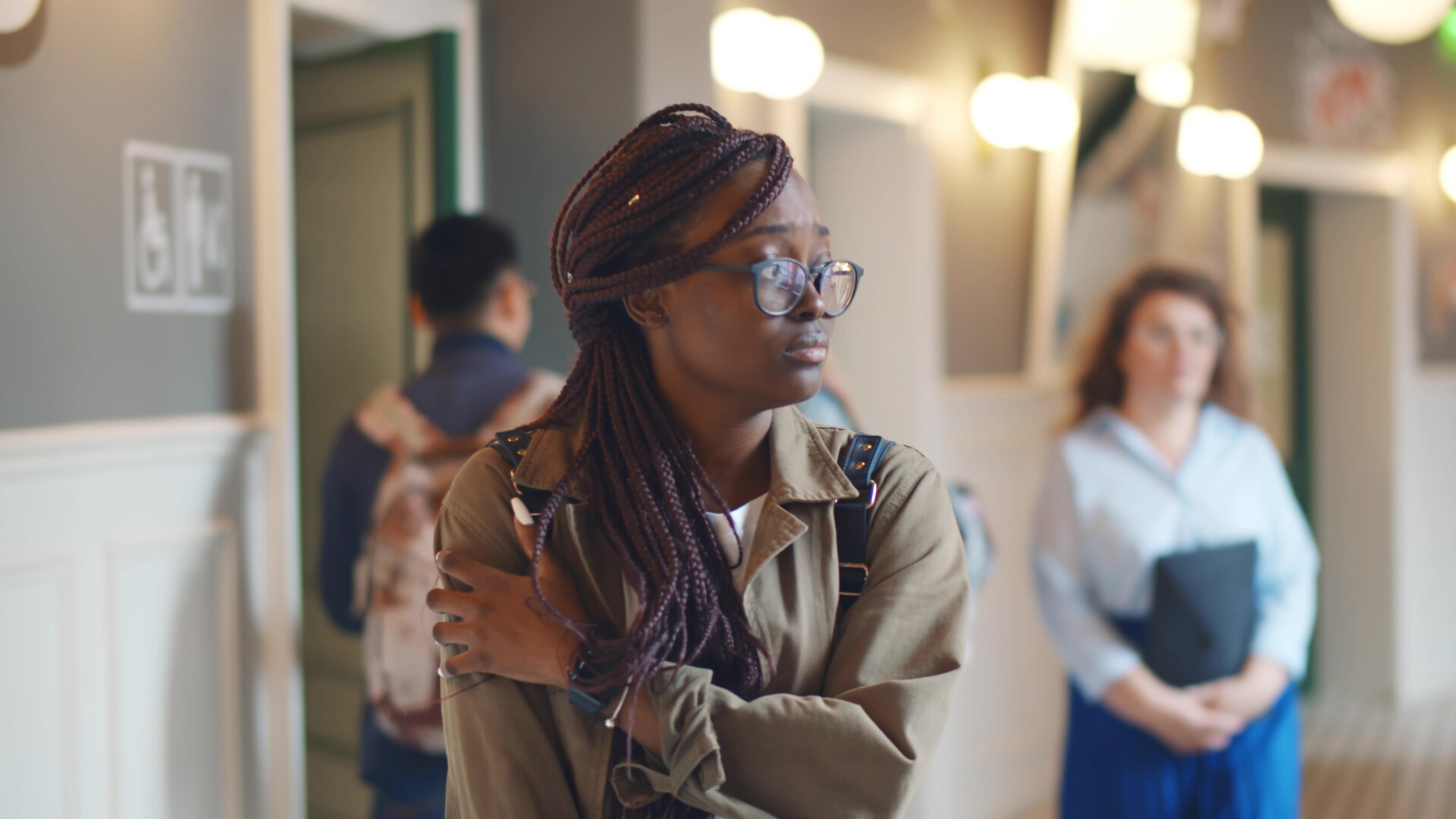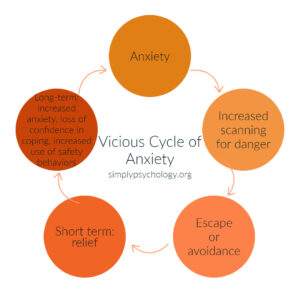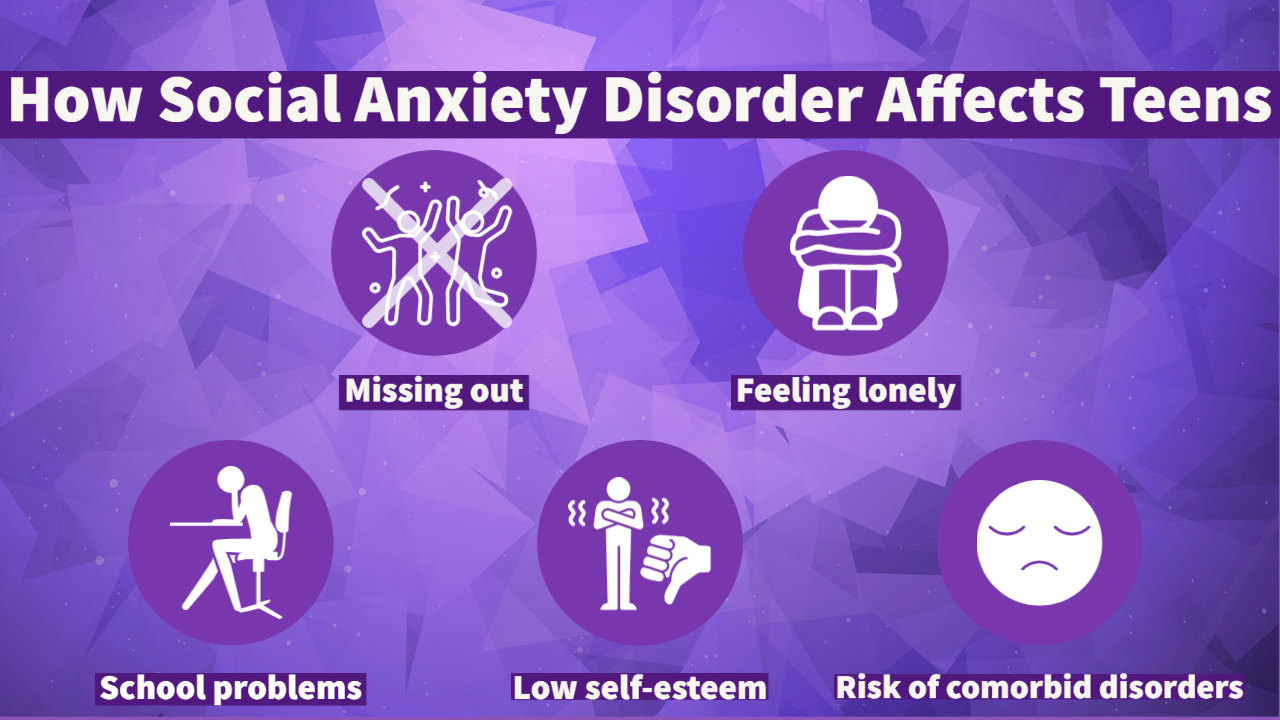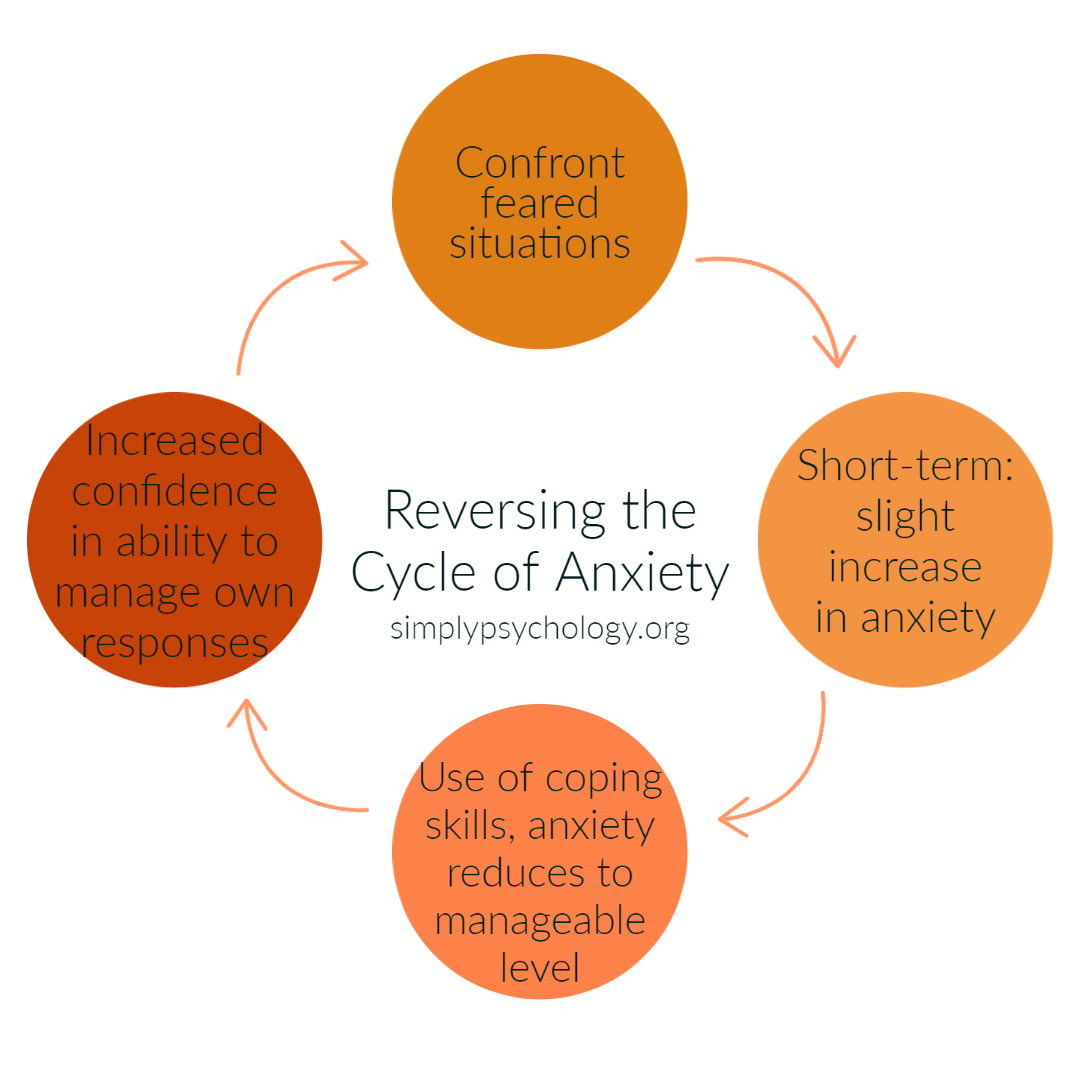Social anxiety disorder (SAD), also known as social phobia, is an anxiety disorder characterized by intense fear and anxiety in social situations.
People with social anxiety disorder often experience excessive worry about being judged or scrutinized by others, and may avoid social situations altogether or endure them with extreme discomfort. This disorder can significantly impair daily functioning and negatively impact quality of life.
It is a recognized mental health condition, detailed in the Diagnostic and Statistical Manual of Mental Disorders (DSM-5).
While it is typical for anyone to experience some social anxiety from time to time, if the anxiety is debilitating, long-standing, and is present in one or more social situations, it may be SAD.
Individuals with SAD may only fear one or two social situations, while others may get severely anxious in multiple or all social situations. Everyone experiences social anxiety differently, and the triggers may vary.

Is SAD Common in Teens?
SAD often peaks in adolescence, with a study from the National Institute of Mental Health (NIMH) finding that around the age of 13, SAD emerges in approximately 12% of teenagers who identify as shy.
Social anxiety is thought to disproportionately affect young people, with many cases diagnosed before age 23 (Kessler et al., 2005). A recent study looking into 16-29-year-olds from culturally and economically diverse countries found that 1 in 3 met the criteria for social anxiety disorder (Jefferies & Ungar, 2020).
Although most teenagers go through periods of normal anxiety related to changes that go along with adolescence, those with SAD experience fear and anxiety that is out of proportion to the situations they face.
SAD may be common in teens, perhaps due to the changes that are occurring in their brains which lead them to be more socially aware at a time when the peer group becomes increasingly important.
Why is SAD Common in Teens?
It is not thought there is a specific causing factor for SAD; rather, it is thought to be attributed to a number of influencing factors such as genetics, brain chemistry, and environmental factors.
Below are some of the common factors which can cause SAD in teens:
Genetic factors
A possible cause for SAD is genetics, as individuals with a family history of anxiety disorders may be more likely to develop SAD
Likewise, the genetic closeness of the family member with an anxiety disorder (e.g., parent or sibling), the more likely it is that a teen will develop SAD.
Developmental and social changes
SAD may be common in teenagers due to the developmental changes and social pressures that occur during adolescence.
As teenagers strive for greater independence and acceptance from their peers, they may experience anxiety and self-doubt in social situations. Additionally, hormonal changes during puberty can exacerbate anxiety symptoms.
Personality traits
A child with a naturally quiet temperament, withdrawn or unwilling to try new things, may be at an increased risk of developing SAD as they enter adolescence.
Parenting style
There may be an association between parenting styles and a teen developing SAD. This can be especially relevant if the parent is overprotective of their child.
An overprotective parent may keep their child from experiencing a healthy level of social interaction or from taking new risks. Thus, the child may lack the opportunity to learn the necessary skills to cope in certain social situations.
Bullying
Negative experiences such as bullying, social exclusion, or traumatic events can also contribute to the development of social anxiety disorder in some teenagers.
Unfortunately, many children and teens experience bullying from their peers in school and online. Bullying can affect many areas of a person’s life, including making them fearful of social situations.
Speech problems
If a teen has a speech impediment, this can be challenging for many reasons and can negatively affect their confidence in speaking to others.
Can social media contribute to social anxiety?
Some studies have suggested that greater social media usage and more options for non-face-to-face communication is associated with higher levels of social anxiety (Caplan, 2007; Lee-Won et al., 2015).
A potential reason for this might be that individuals with social anxiety favor the relative ‘safety’ of online interactions (Caplan, 2007). Therefore, teens may feel less inclined to push themselves out of their comfort zone if there is less need to be social in person
SAD vs. shyness
It is natural for teens to feel self-conscious or shy in front of others at times. Shy people usually feel uncomfortable around strangers and hesitate to open up in social situations.
For some people, the anxiety that goes with feeling shy or self-conscious can be extreme.
When teens feel so self-conscious and anxious that it prevents them from speaking up or socializing most of the time, it is probably more than shyness, and they may have a social phobia.
In this way, SAD is more than shyness. It is a persistent fear that can affect everyday activities, self-confidence, relationships, and work or school life.
Teens with SAD may go undetected in many cases if parents and teachers interpret their behavior as shyness.
Signs of SAD in teens
Although SAD is a very common mental health disorder, many parents and teachers are unfamiliar with the signs and symptoms in teens.
It is important to consider the following symptoms if you suspect a teen may have social anxiety:
-
Difficulty talking to others.
-
Anxiety about being with other people, especially strangers.
-
Feeling embarrassed when interacting with others.
-
Criticizing themselves after social interaction.
-
Having few friends and having difficulty making or maintaining friendships.
-
Reveals little about themselves when talking to others.
-
Afraid to ask others to meet up.
-
Speaks softly, mumbles, or stutters over their words.
-
Not wanting to go to social events such as parties.
-
Worrying for days or weeks before a public event.
Pay attention to the physical appearance of the teen, as this may give insight into how they may feel in social situations:
-
They may talk with their head down, or arms crossed and slouched posture.
-
They may engage in nervous habits such as nail biting, hair twirling, or constantly fidgeting.
-
Blushing
-
Sweating
-
Trembling, such as their hands or legs shaking.
-
Few facial expressions.
-
Lack of eye contact and looking away from the social group.
It may become obvious that a teen has SAD by noticing their school behavior. Their teacher may report that the teen:
-
Is afraid to speak up in class or contribute to class discussions.
-
Does not ask their teacher for help even when they are struggling.
-
May be visibly uncomfortable in the spotlight, such as when giving presentations to the class.
-
Avoid their classmates outside of class, perhaps eating and playing alone.
-
They may do poorly in school compared to their peers.
A study interviewed pre-teens with signs of social anxiety disorder (Halldorsson et al., 2023).
One preteen expressed how they felt like they were being judged by other children:
‘There were these three girls laughing, and I thought they were laughing at me.’
12-year-old
The preteens would also express how they would cope with social situations such as preparing what to say or safety-seeking behaviors:
‘I’m thinking of what to say before I say stuff.’
12-year-old
‘…[I] try to make contact, like nice contact… and, just smile and try to be nice… I try to make them think I’m a nice person.’
11-year-old
‘…I will try to look busy, like go on my phone, try to look away so I have to talk to someone.’
12-year-old
How do teens express that they have social anxiety?
It is essential to recognize that some teens may not explicitly disclose their social anxiety, so it’s crucial to pay attention to other signs that they may be struggling.
For instance, a teen may indicate their social anxiety by expressing feelings of worthlessness, such as stating that they are a “loser” or that no one likes them. They may also exhibit reluctance or refusal to attend school, which may be due to their anxiety about social interactions.
Furthermore, teens may also complain of physical symptoms such as headaches, nausea, dizziness, or discomfort in social situations, which may be indicative of social anxiety.
It’s important to keep in mind that parents should avoid jumping to conclusions and assume that any behavior out of the ordinary is a sign of social anxiety. Instead, it’s crucial to maintain an open and supportive relationship with the teen, be attentive to their needs, and offer help if they need it.
How can SAD get worse?
Those with SAD may prefer to alleviate their anxiety by avoiding social situations which make them anxious.
For instance, a teen with SAD may choose to avoid attending parties with their peers so that they are avoiding being anxious. Some with SAD may use safety behaviors to utilize when in social situations.

Safety behaviors can include excessively checking their phone, wearing headphones, rehearsing what to say to others, and drinking alcohol. All these behaviors can be used to make the social situation more tolerable for someone with SAD.
While avoidance and safety behaviors can provide instant relief from anxiety, they can make these individuals more anxious in the long term.
Even if they are not avoiding the situation, the safety behaviors prevent them from fully testing their fears of social settings.
These behaviors can make it harder for those with SAD to face social situations in the future that are unavoidable and where safety behaviors are not possible.
They may be more likely to have negative thoughts about themselves and strongly believe that a ‘social catastrophe’ will occur since they have not fully tested these beliefs previously.
How can SAD Affect Teens?
Below are some ways in which SAD can affect a teen’s life.

Missing out
Teens with SAD may feel disappointed over missed opportunities they were too fearful of trying.
They may have missed out on attending parties, partaking in extracurricular activities, or talking to potential new friends.
They may also miss the chance to share their talents, such as not getting involved in school talent shows, plays, or trying a team sport.
Feeling lonely
Since teens with SAD may struggle with initiating and maintaining friendships, they can become very lonely.
They may also be too fearful of going on dates or even talking to someone they have a romantic interest in, meaning they may find it hard to date.
School problems
Social anxiety disorder can interfere with a teenager’s ability to participate in class, ask questions, or give presentations, leading to lower grades and academic performance.
They may do less well than their peers on group projects and presentations due to their fear of speaking in front of others.
They may be less likely to ask for help in class and may even have trouble attending classes, resulting in lower school performance.
Low self-esteem
Due to all the associated problems teens with SAD may experience, they may develop low self-esteem and a lack of self-confidence.
This can be in combination with negative self-talk, such as being overly critical about themselves and feeling worthless.
Risk of other mental health disorders
Untreated SAD may increase the risk of developing other mental health conditions, especially as they get older.
They may be at a higher risk of developing depression, eating disorders, substance use disorders or other anxiety disorders.
How to help your teen
Embrace discomfort
Anxiety is not likely to be stopped completely as it is natural to experience some discomfort in many situations.
In order to manage their fears and develop confidence, teens with SAD should learn to stop avoiding things that make them anxious.
They should accept that it is not an easy process and that overcoming social phobia means having the strength to go beyond what is comfortable.
Break the avoidance cycle
Since avoidance and safety behaviors can keep the anxiety going and even worsen it, one of the best things to do for a teen with SAD is to break the cycle of avoidance.
This can be done by encouraging your teen to approach situations that make them anxious.
In the short term, this can elevate anxiety, but in the long term, it will give opportunities to test their fears and build their confidence in being able to cope.

Set realistic goals
Start off small and choose realistic and achievable goals for your teen. This could include goals such as joining a club or making a new friend.
Outline the small, manageable steps that can be taken to reach this goal.
Challenge beliefs
After encouraging your teen to approach anxiety-inducing situations, you can help them to challenge their beliefs about the situation, reflecting on what happened.
You could ask them, ‘Were the negative beliefs about the situation accurate?’, ‘Did something go wrong?’ and ‘What went well?’.
You could also encourage them to rate their anxiety before the anxious situation and then again after it is over to help them reflect on how they feel.
Relaxation techniques
Work with your teen to find relaxation exercises that work for them. This could include activities such as drawing, listening to music, yoga, or meditation.
You could experiment together to find the most effective technique for calming anxiety.
Relaxation exercises such as deep breathing can also be utilized when the teen is challenging themselves to break the avoidance cycle.
Educate your teen
It can be helpful to teach the teen about why they feel anxiety, so they have an understanding of the physical changes during these periods of stress.
They could be taught about the fight-or-flight response and the stress hormones involved during heightened anxiety.
This can be helpful for normalizing the responses and understanding that what they are feeling is normal.
Expect setbacks
It is important to expect some setbacks when learning to manage SAD. For instance, there may be times when someone may actually criticize or give judgment to your teen.
It is essential that they try not to focus on the setbacks too much and instead focus on what they can do to get back on track.
They can also use these setbacks to build resilience and have more of an understanding of what to do if they find themselves in a similar situation again.
Role of school
Getting schools on board can play a vital role in your teen overcoming their social anxiety.
This is because school is likely a place where someone with SAD is likely to be the most anxious. School-based interventions led by psychologists, social skills training, and academic skills training can all be helpful ways that schools can intervene in teens with SAD.
Therapy
If a teen’s social anxiety is getting to a stage where it is becoming unmanageable, or they may need some extra help, talking therapies such as cognitive behavioral therapy (CBT) may be considered.
CBT is used to identify and challenge negative thinking patterns and behaviors and restructure these into healthier ones.
Working with a therapist who understands SAD can allow your teen to understand their fears and work on successful coping strategies.
Do you need mental health support?
USA
Contact the National Suicide Prevention Lifeline for support and assistance from a trained counselor. If you or a loved one are in immediate danger: https://suicidepreventionlifeline.org/
1-800-273-8255
UK
Contact the Samaritans for support and assistance from a trained counselor: https://www.samaritans.org/; email jo@samaritans.org .
Available 24 hours a day, 365 days a year (this number is FREE to call):
116-123
Rethink Mental Illness: rethink.org
0300 5000 927
References
Bank, S., Burgess, M., Sng, A., Summers, M., Campbell, B., & McEvoy, P. (2020). Stepping Out of Social Anxiety. Perth, Western Australia: Centre for Clinical Interventions.
Caplan, S. E. (2007). Online social interaction, psychosocial well‐being, and problematic Internet use. Internet addiction: A handbook and guide to evaluation and treatment, 35-53.
Halldorsson, B., Waite, P., Harvey, K., Pearcey, S., & Creswell, C. (2023). In the moment social experiences and perceptions of children with social anxiety disorder: A qualitative study. British Journal of Clinical Psychology, 62(1), 53-69.
Jefferies, P., & Ungar, M. (2020). Social anxiety in young people: A prevalence study in seven countries. PloS one, 15(9), e0239133.
Kessler, R. C., Berglund, P., Demler, O., Jin, R., Merikangas, K. R., & Walters, E. E. (2005). ” Lifetime prevalence and age-of-onset distributions of DSM-IV disorders in the National Comorbidity Survey replication”: Erratum.
Lee-Won, R. J., Herzog, L., & Park, S. G. (2015). Hooked on Facebook: The role of social anxiety and need for social assurance in problematic use of Facebook. Cyberpsychology, Behavior, and Social Networking, 18(10), 567-574.
National Institute of Mental Health (2016). ANXIETY DISORDERS. https://www.nimh.nih.gov/health/topics/anxiety-disorders/index.shtml
Scott, H. (2018, June 18). GUIDANCE FOR PARENTS OF TEENAGERS: DOES YOUR SHY TEEN HAVE SOCIAL ANXIETY DISORDER? National Social Anxiety Center. https://nationalsocialanxietycenter.com/2018/06/18/guidance-parents-teenagers-shy-teen-social-anxiety-disorder/
Shannon, J. (2022). The shyness and social anxiety workbook for teens: CBT and act skills to help you build social confidence. New Harbinger Publications.

